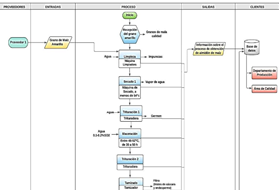Analysis of the problem and approach around the production of biodegradable packaging from maize by-products
Análisis De La Problemática Y Enfoque Entorno A La Elaboración De Envases Biodegradables A Partir De Subproductos Del Maíz
Show authors biography
Plastic has become a very demanded material nowadays due to its physical-chemical characteristics, which allows it to be very applicable in different products for several uses. However, its massive production and poor waste management cause a serious environmental problem of difficult solution, National Geographic, recorded a global production of 407 million tons of plastic until 2015, which take more than 1000 years to degrade, because they are produced from the processing of fossil fuels. For this reason, we seek to avoid dependence on this plastic by using new alternatives such as biodegradable plastics, which are highly degradable to the organic compounds present in the environment. Starch is one of the main raw materials considered for such fin, due to its beneficial characteristics compared to oil. For its extraction there are different methods, such as dry milling by hand, wet milling used by large industries for refine and improve the obtaining of starch and nixtamalization that works hand in hand with the method of wet milling. In Ecuador, there is a great deal of agricultural activity, therefore, it is of interest to take advantage of by-products and residues from agro-industry such as corn rejection grains, corn and cornstarch, considered as alternative non-conventional sources for the production of starch in the elaboration of bioplastics competing with traditional plastic because they have appropriate characteristics and 89.40% degradation in 90 days.
Key words: biopolymer, bioplastics, starch, degradability
Article visits 1306 | PDF visits




